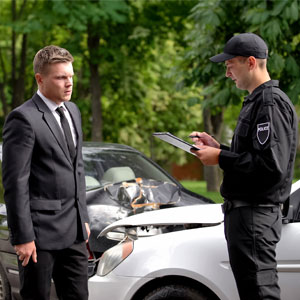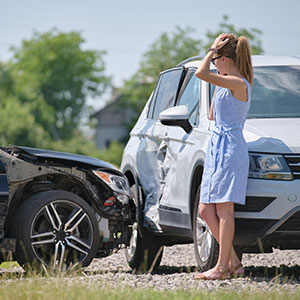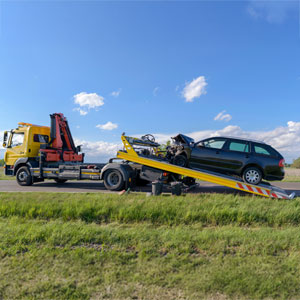Red Light Cameras Show Increase In Lakeland Accidents in 2016
Car AccidentsA report released on December 31, 2016 by the Florida DHSMV shows an increase in car accidents at intersection with red light cameras across Florida. The City of Lakeland has 6 red lights cameras installed at various intersections. Statewide, between July 2012 and April 2016 rear-end collision increased by 11% and angle collisions increased by almost 7%. Meanwhile, collisions involving pedestrians were down 19% and red light running was down 3%. Overall, accidents with injuries increased 9% over that time frame. Police and authorities who benefit from citation revenues claim that the statistics do not necessarily correlated with the use of the cameras.
What Do Lakeland’s Statistics Show Us?
At the 6 intersections with red light cameras in the City of Lakeland, the statistics show 87 crashes in the same time frame before the cameras. After the cameras were installed, the statistics show that 128 crashes happened. That’s a 47% increase.
For rear-end accidents specifically, the statistics show an increase from 62 crashes to 93 crashes. That’s 50% increase in rear end collisions since the installation of red light cameras. We can glean from these numbers that red light cameras really do cause people to pay more attention to the red lights and stop when they can, however, the numbers are showing us that people are really doing so for financial reasons (because they are afraid of having to pay for a ticket) rather than for true safety. In other words, the red light cameras only cause people who are paying attention to stop because their judgment has been modified for those intersections. As we can see from the increase in rear end collisions in these intersections, not everyone is responding the same way to the fear of the cameras.
What Do I Do If The Light Turns Yellow?
When I see a yellow light (particularly at an intersection with red light cameras) while I am driving, I almost always take a look around to see if I think the person behind me is going to stop. If I think that the person behind me is not going to stop, then I most certainly keep going regardless of the color of the light. When I do that, the person behind me usually goes through the intersection as well and “proves my judgment right.” I feel that if I had made a harder than usual stop out of fear of being “caught” by a red light camera, then I would have been rear-ended. I have always said that the best accident is the one that never happens. The problem with the red light cameras is that they have become a source of revenue for government are not really connected to safety. While the cameras may change the behavior of a lot of drivers, I continually question whether they are making the world a better place.
The most interesting statistic to me is that there was no change in the amount of crashes in the intersection itself directly caused by red light running. In other words, the number of people who just blatantly run the light (whether it is because they intentionally disregard the law or were just not paying attention) was the same in the City of Lakeland. This is more evidence that money is the real issue as opposed to safety. The state averages $4,250 in fees to private companies per month for each camera in operation.
Right Hand Turns
The bulk of red light camera cases involve a right hand turn at an intersection without stopping. Under section 316.0083, Fla. Stat., a traffic citation cannot be issued to a driver making a right hand turn at an intersection if they come to a complete stop after crossing the stop line. Early on in the red light camera saga, this was an issue of heated contention over what was an actual violation. Ordinarily, a driver is required to stop behind the white line. The reason for this is to respect the fact that the crosswalk is a protected zone as drivers who failed to stop behind the white line put pedestrians at risk. As the red light cameras make the majority of their revenue from right hand turns that people never come to a complete stop (they essentially yield), government is focusing on revenue and not on true safety which would require interdiction of those who blatantly run the red light straight through and at full speed.
Real Evidence Is What Is Needed
Despite what I have said above, red light cameras are actually a great thing for society. However, it is the way that they are being monetized that is the problem. Government should provide funding for cameras at all major intersections with a traffic light and should use the evidence gained from those cameras to cite drivers who cause accidents after running a red light. The deterrent effect of being issued a ticket for $158 by mail that does not have point associated with it is merely a tax or a toll to be paid at red lights. Fines for red lights yielded $60 million. Various cities and counties actually collected approximately $53 million in fines with half of those dollars was paid to red-light camera companies to review the films. Rather than being a source of controversy, people who are hurt by red light runners really need the evidence produced by these red light cameras to prove their cases in traffic court and in civil court. These cameras should run 24/7 and should only be reviewed when there is a citation, an accident, or an incident such as a high speed chase for which evidence is necessary.
Call Us To Discuss Your Case
If you or someone you know has been injured in an accident where a driver ran a red light in Lakeland, you should contact a Lakeland car accident attorney for a free case review.
Get the 2016 Florida DHSMV report here


